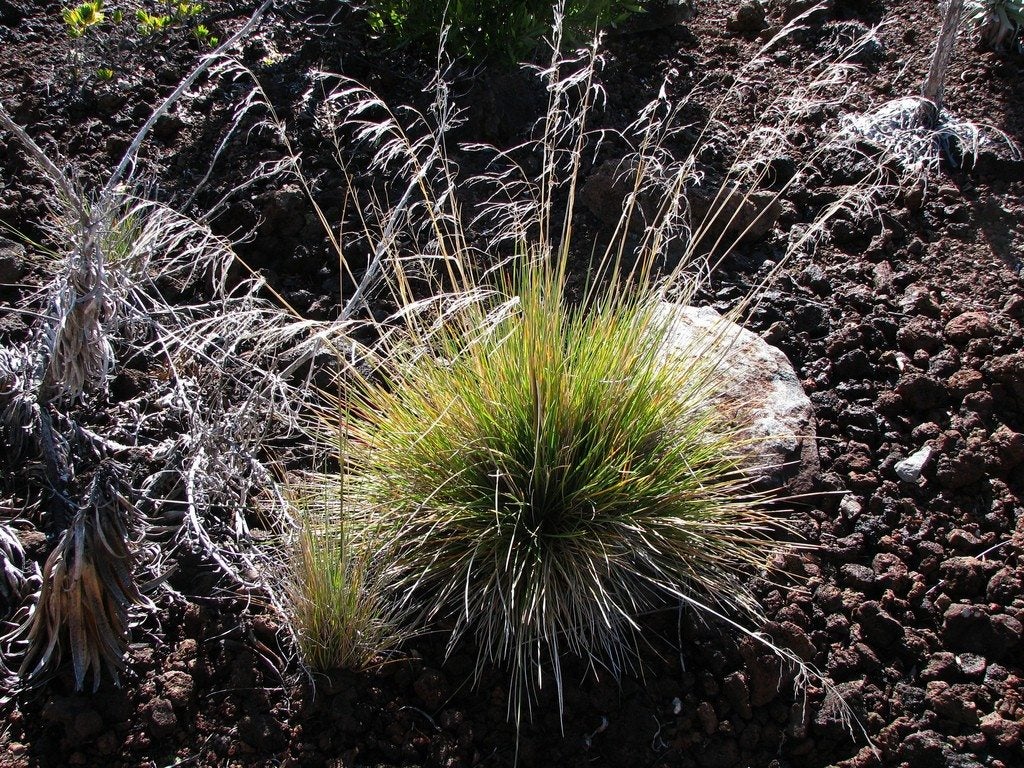Ornamental Hairgrass - Tips For Growing Tufted Hairgrass


Many of the ornamental grasses are suited for dry, sunny locations. Gardeners with predominantly shady locations that yearn for the movement and sound of grasses may have trouble finding suitable specimens. Tufted hairgrass, however, is perfectly suited for such locations. Ornamental hairgrass is ideal for shady and partially sunny locations in cool to temperate climates.
What is Tufted Hairgrass?
Now that you know it exists, what is tufted hairgrass (Deschampsia cespitosa)? It's an elegant ornamental tussock form that grows in mound-shaped clumps. Borders or containers are excellent tussock grass uses. This cool-season perennial plant produces flowers from June until September. The plant is 2 to 4 feet (0.5 to 1 m.) tall with a similar spread. The flowers are feather panicles with hairy seed heads and may be brown, green, or gold, depending upon the cultivar. Tussock grass care is minimal and the plant provides an easy-to-grow mass of fine texture with cloudy, upright flowers.
Tussock Grass Uses
Tufted hairgrass is used as forage for ruminants and grazing animals. It is also food for smaller animals and birds, and makes a good habitat for the same. The plant is also useful as a barrier to erosion and a reclamation species for overgrazed, heavily mined, and disturbed natural sites. The plant's resistance to toxins makes growing tufted hairgrass useful for reintroducing plant life. As an ornamental plant, you can take advantage of the new cultivars, which provide variant color, texture, and size.
Ornamental Hairgrass Varieties
The new hybrids of the native hairgrass challenge the common appearance of the plant. Some of the new varieties are small and perfect for container gardening. These include:
- Northern Lights is only a foot (0.5 m.) tall and has white, variegated leaves with a pink blush on the edges.
- Tautraeger grows up to 2 feet (0.5 m.) tall and has dark green foliage with bluish flowers.
- Goldschleier is a similar size and bears golden panicles.
- Schottland is 2 to 3 feet (0.5 to 1 m.) tall and bluish-green, while Bronzeschleier has finer foliage and yellow blooms.
Tussock Grass Care
Provided the grass is installed in a suitable location, it needs minimal maintenance. Choose moist soil in light to medium shade for growing tufted hairgrass. The plant is tolerant to saline and alkaline soils. It also thrives in poorly drained, boggy, and well-drained soils. Hairgrasses produce new growth in spring. The best way to remove old blades is to comb through the grass with your fingers. This restores the appearance of the plant and allows air and light to get into the center. It is not necessary to fertilize the plant but an application of organic mulch around the root zone will gradually increase nutrient content available to the roots. Water deeply and then allow the soil to dry completely to a depth of at least 3 inches (7.5 cm.). Ornamental hairgrass is resistant to most pests and diseases.
Gardening tips, videos, info and more delivered right to your inbox!
Sign up for the Gardening Know How newsletter today and receive a free copy of our e-book "How to Grow Delicious Tomatoes".

Bonnie Grant is a professional landscaper with a Certification in Urban Gardening. She has been gardening and writing for 15 years. A former professional chef, she has a passion for edible landscaping.
-
 Looking For Plants To Give You The Soft And Fuzzies? Try These 5 Fuzzy Leaf Plant Options
Looking For Plants To Give You The Soft And Fuzzies? Try These 5 Fuzzy Leaf Plant OptionsLovers of texture, drama, silver foliage and tactile plants will adore these special sensory garden additions. These fuzzy leaf plant options will leave you all aglow
By Susan Albert
-
 Get Ready For A Summer Of Hummers! Grow These Full Sun Hummingbird Plants and Flowers
Get Ready For A Summer Of Hummers! Grow These Full Sun Hummingbird Plants and FlowersIf you’re lucky enough to enjoy a sunny backyard, make sure you are maxing out on your pollinator opportunities and grow these full sun hummingbird plants and flowers
By Tonya Barnett